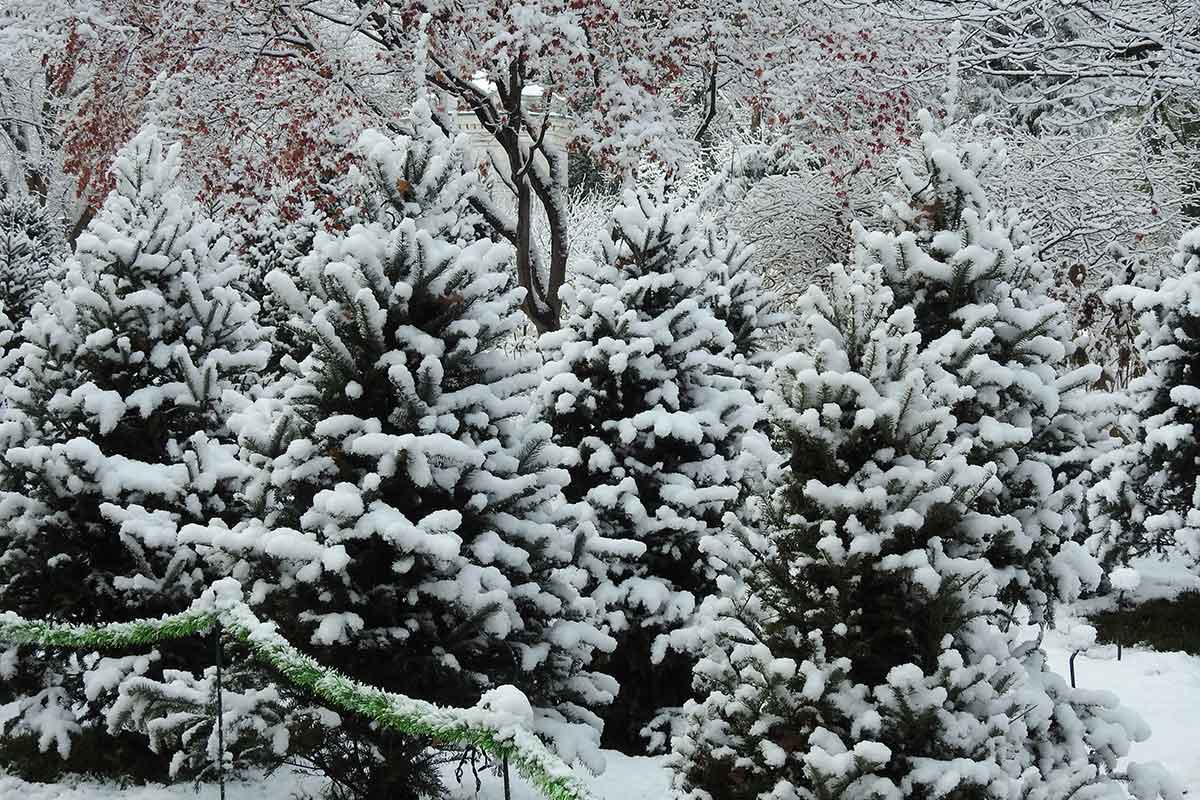This story was originally published in our May 2021 edition.
If trees could talk, the bur oak standing sentry over the Missouri River bottomland and John Sam Williamson’s soybeans would certainly have some stories. The tree is just a long stone’s throw from the Katy Trail outside McBaine.
In fact, with an estimated 380 years of history, those stories could take a while to get through. The massive tree’s height is impressive enough—74 feet tall—but its girth of 295 inches around and canopy spread of 129 feet is breathtaking. With these dimensions, it is the largest bur oak in the state and one of the largest in the country.
“I’m sure it could tell lots of stories,” says John Sam, seventy-two, whose family has owned the land where the tree rises for six generations. “I would imagine there’s been babies conceived under the tree. It’s got a lot of history—and it’s a landmark.”
The big bur oak, just twelve miles southwest of Columbia via Route K, also has a Facebook audience of more than 3,500 devoted fans keeping the tree’s past and present fresh and vibrant. Among the sacred memories are weddings, marriage proposals, and family reunion photos, as well as funerals. The ashes of some dearly departed family members—and even pets—are mingled with the soil there.
John Sam says local legend also claims that a gambling debt was resolved by homicide near or under the big tree some decades ago. A knife fight dating back to the turn of the twentieth century also resulted in a death, he says.
A rancher who stopped under the tree during a long cattle drive was robbed and murdered there, according to years of stories told and repeated as either myth or legend.
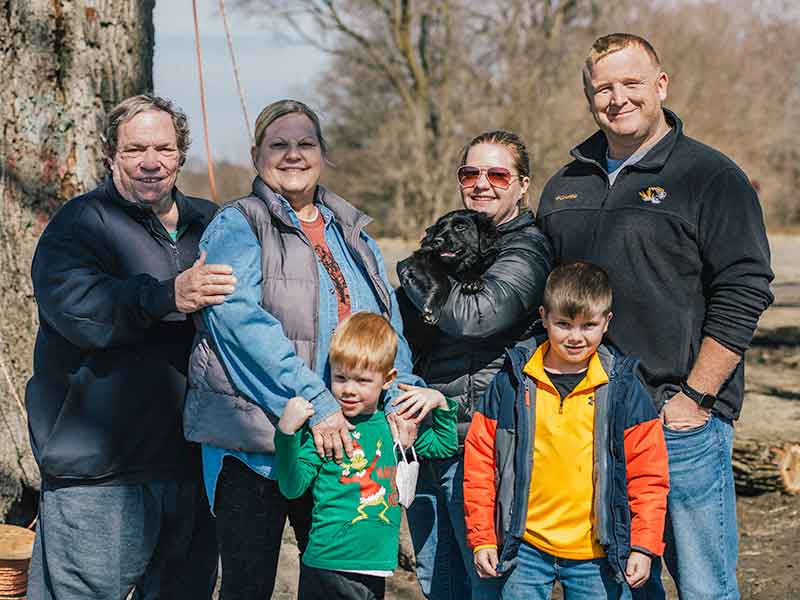
A Shocking, Fiery Encounter
Most of the big tree’s stories would be weather-related, from prolonged, parched droughts to tornadoes and historic flooding. During the devastating Flood of 1993, the big tree’s canopy was the only thing visible for miles, with the Missouri River and Perche Creek spilling out of their banks and covering the bottom eight feet of the tree. Arborists blame the great flood for the death of the big bur oak’s smaller sister tree, which once stood nearby.
The stories would also be shocking. Literally. The big tree has survived countless lightning strikes, the most recent on October 23, 2020, which also struck panic and despair into the hearts of the fifty or so people who gathered to watch Boone County Fire Protection District firefighters douse the flames with water and foam.
John Sam said the lightning strike blew one limb off the tree and one hundred feet into his field. Some of the pieces were still on fire when he arrived on the scene.
Steve Baumann, who started the champion bur oak tree’s Facebook page with his father, Gene Baumann, vividly remembers the “pit-in-the-stomach” feeling of seeing the big tree ablaze.
“I didn’t expect to see that kind of fire coming out of it,” he recalls, adding, “Someday the tree’s going to die. I just hope it’s not going to be for a few more generations.”
Gene Baumann, a noted writer, teller of tales, and historian from Rocheport, recently posted on the big tree’s Facebook group a photoshopped image of sixty-year-old Steve chatting with eleven-year-old Steve as the younger version leaned back against the tree.
Steve has taken his own kids and grandkids there as a sort of communal ritual.
The Right Place to Be
Since the October lightning strike, thousands of people have expressed interest in the tree’s health and future, “and the role it plays in our lives,” Gene says. An especially notable example of that role happened on December 21, 2020 when Jupiter and Saturn converged to form the “Christmas Star,” the first time that phenomena had occurred in eight hundred years. Gene says it’s odd to think of something that last happened before the big bur oak was even a sprout.
Not surprisingly, the picturesque area, unobstructed by light, drew a large crowd with cameras, telescopes, and heavy coats to see the wondrous “star.”
“While the tree was not yet planted for the last viewing of the star,” Gene wrote, “it has witnessed the entirety of our nation’s history and a significant part of world history. It just seemed the right place to be on that night.”
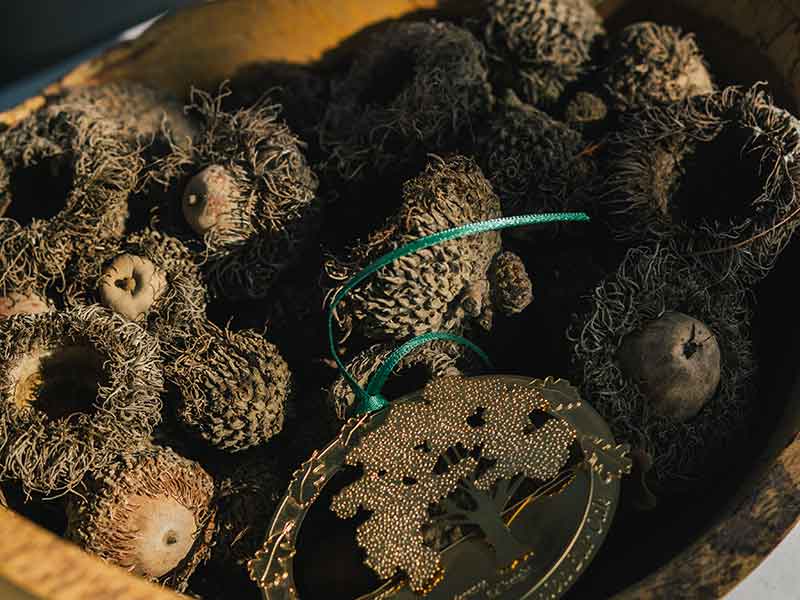
Human Harm
While 2020 was a tough, unforgettable year for everyone, it was also challenging for the tree that has already survived multiple tests of time. In addition to natural threats such as flooding and fires, it has survived multiple vandalisms over the years, including a few graffiti messages in recent months that included racist epithets.
Those who monitor the tree’s Facebook group closely are usually the first to arrive with buckets, mops, and brushes to paint over the graffiti with mud. Covering the vandalism is preferable to trying to remove the paint, expert arborists say, because the paint will cause less damage than the process of removing it.
That the lone tree with a spectacular girth and spread hasn’t been killed by a fatal lightning bolt seems miraculous. By nature, oak trees hold a lot of moisture, so they are ideal conductors of electricity. And eighteen nearby drinking water treatment wells that go one hundred feet into the ground also tend to invite lightning strikes.
About ten years ago, Boone Electric Cooperative put lightning rods in the big tree and connected them to copper wire that went to ground rods, a sure solution to discharging the explosive energy of a lightning strike.
“I knew this would happen,” John Sam explains. “Thieves stole that copper wire within a month or so.”
His first real memory of the tree, probably about sixty-five or so years ago, was when a university forestry club put up a plaque at the tree to commemorate the Williamson family’s stewardship of the tree. The plaque was placed on a large concrete base.
“It took a while, but somebody stole the plaque,” he says. “The story was that it wound up in a fraternity house somewhere.” The concrete base remains and has probably received more coats of paint and graffiti than the tree.
Steve does wonder if the Facebook group might be something of a double-edged sword of attention for the big tree.
“We didn’t mean to increase traffic, but with covid, people have more time on their hands,” he surmises. “It’s one thing that people in Columbia can get to quickly that gets them out of the city and puts them in a happy place. And everything’s alright.”
For now, everything seems alright for the tree, too, at least as well as can be expected for something that’s lived three-and-a-half centuries.
“It’s in the twilight years,” says Chuck Conner, community forester with the Missouri Department of Conservation. “But that tree may outlive you and me.”
Chuck worked in Columbia for several years before moving to the Kansas City area, where he oversees several conservation areas.
“That tree meant a lot to me,” he adds. “I went and visited it quite a bit.”
“Chuck’s interest has reached a much higher level now that he is the acting manager of the conservation department’s champion tree program. Chuck was among the throng of visitors checking in on the big bur oak the day after the October lightning strike. Last fall, he collected some acorns that had fallen and planted them in pots on his deck.
“I’m going to grow me a McBaine bur oak,” he says with a laugh. “But it isn’t going to be anywhere as big in my lifetime.”
He’s also not the first to point out that the avid attention heaped on the tree, especially by motorists driving or parking beneath and around the tree, is potentially damaging.
“It’s compacting the soil structure and damaging roots,” Chuck says. “It’s definitely gotten some damage due to people going out there and loving it.”
Most visitors are not intentionally endangering the tree with their attention, Steve says, conceding that if the off-road vehicle traffic is not abated, the activity could amount to “loving it to death.”
The Facebook group and other avid big bur oak tree protectors are eager to educate the public about the tree’s unique needs and unmistakable place in our state’s history. “We’ve got a really good brain trust, a lot of people with good ideas,” Steve says.
John Sam is certain that 99 percent of the people who visit the tree—“probably more than that—are very good to the tree.” He cites examples of visitors picking up other people’s trash or painting mud over graffiti.
“The tree’s got a lot of notoriety,” and that includes cyclists coming off the Katy Trail less than a quarter mile away to rest or snap some photos, John Sam adds. “Every time some energetic reporter writes about it and calls attention to it, it gets more attention.”
Not all attention is positive. John Sam got a call from a sheriff’s deputy one day to report someone had excavated around the tree and left what looked like a grave. “They were worried it was a baby,” he adds. Some careful digging revealed a dog corpse.
“I don’t really want it to be a wedding venue or a graveyard, but I certainly don’t mind people taking pictures there,” he says.
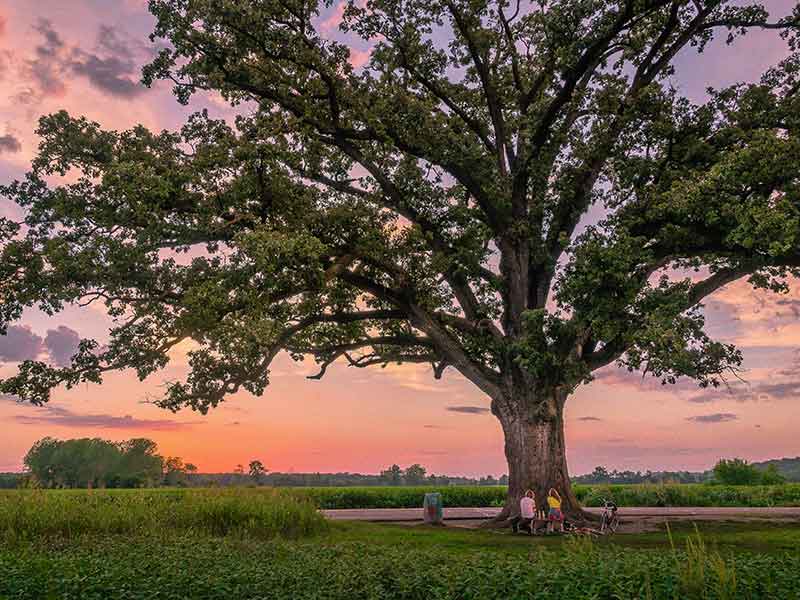
Expert Caretakers
A live event from the big bur oak on February 27, the Mid-Mo Expo 2021, was also shared over Zoom and featured John Sam and the tree experts who have donated time to the big bur oak over the years. “The History and Health of the Big Bur Oak,” the first of three programs presented by and benefiting the Boone County Extension Council, included certified arborist Bill Spradley. Bill graduated from the University of Missouri at Columbia.
He has his own connection to the big tree, and once received a proclamation from former Gov. Jay Nixon for his work in preserving the bur oak. Bill has led a handful of tree-trimming projects at the big tree, cutting away dead limbs and boring aeration holes into the soil.
Bill’s son, Kyle, a nature photographer, has two big bur oak tree clones at his family farm. Other clones, made from professional cuttings, are already thriving. One such tree is a thirty-five-foot bur oak in John Sam’s front yard, taken from a cutting about twenty years ago. As many as five clones offer assurance that the big tree’s superior genetics will keep the young trees thriving.
“It’s genetically superior or it wouldn’t have lived that long, but it’s also really lucky,” John Sam says.
John Sam also calls on Chris Starbuck, a retired MU professor of plant sciences who lives down the road from the Williamsons and the big tree. During the hot, dry summer of 2011, when Chris recommended getting water to the tree, John Sam hauled 2,500 gallons of water to offer the champion bur oak a needed drink.
He later received five dollars in the mail “from some lady, I don’t know who it was, to reimburse me for my efforts.”
Offers to purchase the land where the tree stands occasionally come.
“We’re not interested in that,” John Sam says. “It’s been in my family six generations.” The Williamsons came to mid-Missouri in 1827 via a wagon train from Virginia, and the McBaine bottomland farm was purchased on the courthouse steps about ten years later.
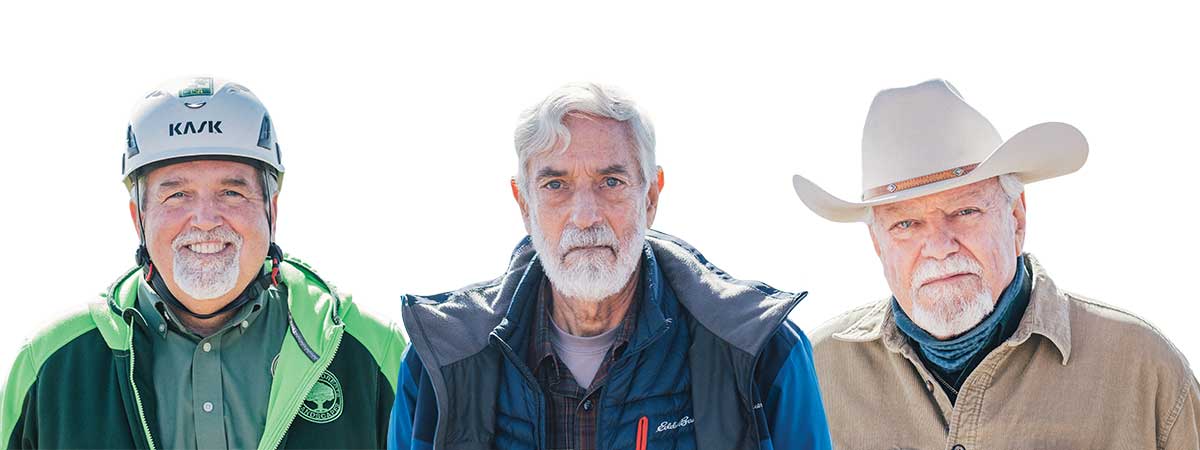
Nearby Eagle Bluffs
The Big Bur Oak Facebook group routinely features stunning photos and drone footage, with many of the perfectly timed, just-right photos composed by those who also frequent Eagle Bluffs Conservation Area. Eagle Bluffs is a 4,428-acre nature preserve and wetland created after the Flood of ’93 swallowed up and destroyed farmland.
Eagle Bluffs features several pairs of nesting eagles—known by name and sight by frequent visitors—and a cornucopia of natural wonders with scores of bird, waterfowl, mammal, and reptile species.
Eagle Bluffs and the McBaine bur oak are separated by just two miles. Eagle Bluffs is crucial for understanding the meandering, changing course of the Missouri River, which almost certainly made the big bur oak visible to river travelers more than two hundred years ago.
A Tribute
Perhaps the famed explorers Meriwether Lewis and William Clark spied the sprawling bur oak on their journey that sparked the nation’s westward expansion. Gene believes they could have seen it. Taking some creative liberty and his intense passion for local and national history, Gene has penned an homage to the tree that depicts a Lewis and Clark moment. From his essay, “The Big Bur Oak”:
On the day before the Lewis and Clark expedition made camp near Rocheport in 1804, Lewis nudged Clark as they moved upstream on the Missouri River and pointed to a huge tree visible in the distance to the east. “Looks like a bur oak,” Clark responded.
How do I know this happened? I don’t, but it could have. Based on the estimates of many experts, the 380-year-old tree would have been 164 years old—and visible from the river.
Gene puts it in even more astonishing historical context, based on a 380-year-old age. “That acorn from its mother tree dropped to the ground about 1640, a mere 20 years after the Pilgrims landed.”
To see the full list of current champions, go to mdc.mo.gov and search for champion trees.
Champion Trees
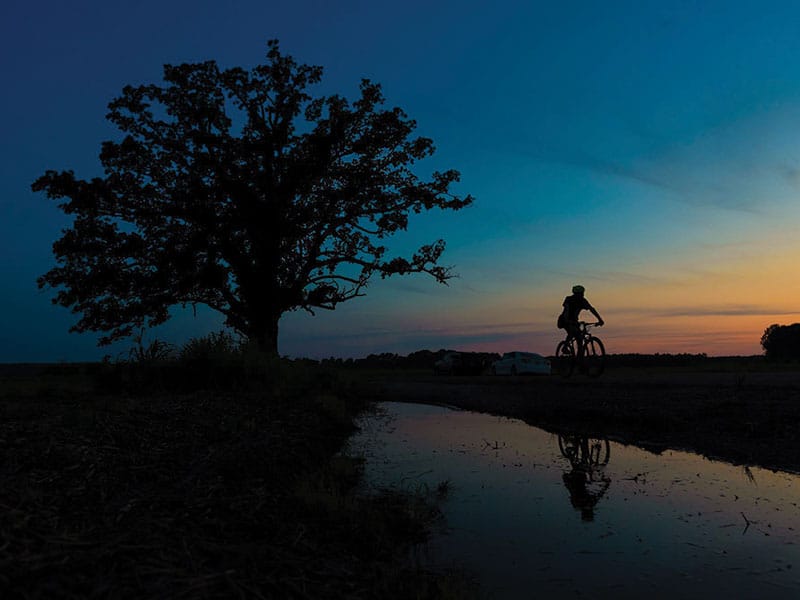
Missouri has 120 trees considered champions for their species. Seventy-one of the champs are on private property, though a few have public access. The champion bur oak at McBaine is one of those because it grows just a few feet from a paved road.
Here’s a sampling of other state champion trees.
- The state champion slippery elm is in the front yard of a Neosho residence. It’s 82 feet high with a circumference of fourteen feet, seven inches, and a spread of sixty-five feet.
- Missouri Botanical Garden’s champion white basswood accents the regal landscape of the Museum Building, one of the original structures erected at the Missouri Botanical Garden more than 150 years ago. Directly across from the big champion is the former state champion possum haw. The white basswood measures 87 feet tall, has an 84-foot crown, and a 158-inch circumference. Perhaps even more stunning is knowing that the area was virtually treeless when. Henry Shaw began the botanical garden in 1859.
- Robinson Cemetery’s northern catalpa tree in Hannibal is about 125 years old and stands 70 feet with a 120-foot spread and a massive 290-inch circumference. The tree in the state’s northeast corner casts a broad shadow over many generations of African Americans who lie in rest there.
- Big Oak Tree State Park has bragging rights for four state champion trees: sweet gum, pumpkin ash, persimmon, and swamp chestnut oak. Many past state and national champion trees dot the 1,029-acre park, which includes a virgin stand of untouched bottomland hardwood forest that was once the hallmark of the Bootheel region. The park is just outside East Prairie in the state’s southeastern corner.
Do You Have a Champion?
Twenty-eight Missouri trees do not have a champion. To learn more about how the big trees are measured, what species qualify for champion status, and how to nominate trees for the state champ list, go to mdc.mo.gov/trees-plants/missouri-state-champion-trees.
Photos // Mat Matlack, Nick Barwick, Toby Young, Holly Kite, Heath Cajandig, Heath Cajandig
Related Posts
A Tip-Top Tree for Christmas
Discover 6 tips to maintaining a fresher and greener live Christmas tree.
Relive Yesteryear at Red Oak II
The late Missouri artist Lowell Davis leaves a legacy near Carthage.
Inside a Christmas Tree Farm
The Boonville Christmas Tree Farm has more to offer than a tree to decorate.

